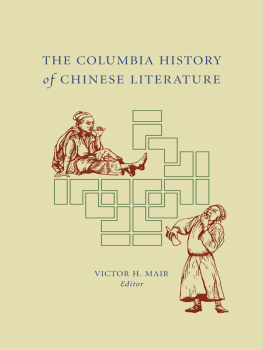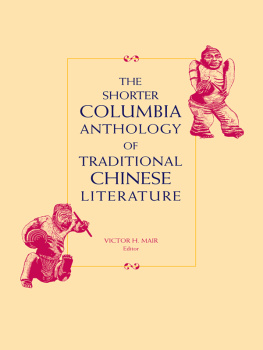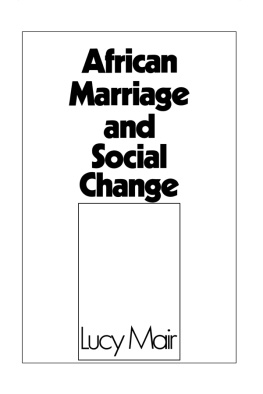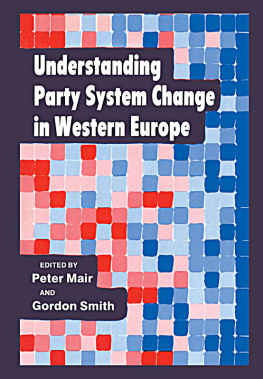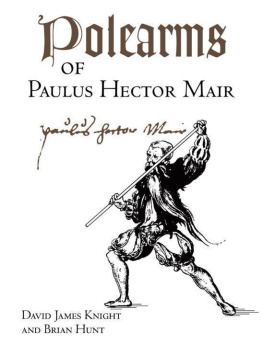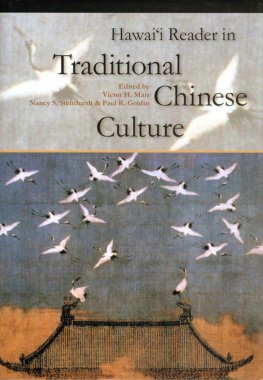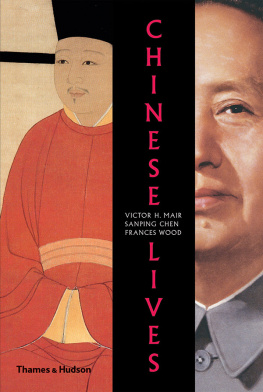Mair - Tao Te Ching (Victor Mair translation) by Lao-Tzu and Victor H. Mair
Here you can read online Mair - Tao Te Ching (Victor Mair translation) by Lao-Tzu and Victor H. Mair full text of the book (entire story) in english for free. Download pdf and epub, get meaning, cover and reviews about this ebook. year: 1990, genre: Religion. Description of the work, (preface) as well as reviews are available. Best literature library LitArk.com created for fans of good reading and offers a wide selection of genres:
Romance novel
Science fiction
Adventure
Detective
Science
History
Home and family
Prose
Art
Politics
Computer
Non-fiction
Religion
Business
Children
Humor
Choose a favorite category and find really read worthwhile books. Enjoy immersion in the world of imagination, feel the emotions of the characters or learn something new for yourself, make an fascinating discovery.

- Book:Tao Te Ching (Victor Mair translation) by Lao-Tzu and Victor H. Mair
- Author:
- Genre:
- Year:1990
- Rating:4 / 5
- Favourites:Add to favourites
- Your mark:
- 80
- 1
- 2
- 3
- 4
- 5
Tao Te Ching (Victor Mair translation) by Lao-Tzu and Victor H. Mair: summary, description and annotation
We offer to read an annotation, description, summary or preface (depends on what the author of the book "Tao Te Ching (Victor Mair translation) by Lao-Tzu and Victor H. Mair" wrote himself). If you haven't found the necessary information about the book — write in the comments, we will try to find it.
Mair: author's other books
Who wrote Tao Te Ching (Victor Mair translation) by Lao-Tzu and Victor H. Mair? Find out the surname, the name of the author of the book and a list of all author's works by series.
Tao Te Ching (Victor Mair translation) by Lao-Tzu and Victor H. Mair — read online for free the complete book (whole text) full work
Below is the text of the book, divided by pages. System saving the place of the last page read, allows you to conveniently read the book "Tao Te Ching (Victor Mair translation) by Lao-Tzu and Victor H. Mair" online for free, without having to search again every time where you left off. Put a bookmark, and you can go to the page where you finished reading at any time.
Font size:
Interval:
Bookmark:


TAO TE CHING
A Bantam Book / September 1990
Published simultaneously in hardcover and trade paperback.
Bantam New Age and the accompanying figure design as well as the search for meaning, growth and change are trademarks of Bantam Books, a division of Bantam Doubleday Dell Publishing Group, Inc.
All rights reserved.
Translation copyright 1990 by Victor H. Mair.
Cover art copyright 1990 by Dan Heitkamp.
Book design by Maria Carella.
No part of this book may be reproduced or transmitted in any form or by any means, electronic or mechanical, including photocopying, recording, or by any information storage and retrieval system, without permission in writing from the publisher.
For information address: Bantam Books.
Library of Congress Cataloging-in-Publication Data
Lao-tzu.
[Tao te ching. English]
Tao te ching : the classic book of integrity and the way / by Lao Tzu ; translated, annotated, and with an afterword by Victor H. Mair ; woodcuts by Dan Heitkamp.
p. cm.
An entirely new translation based on the recently discovered Ma-wang-tui manuscripts.
Includes bibliographical references.
eISBN: 978-0-307-43463-0
I. Mair, Victor H., 1943- II. Title.
BL1900.L26E5 1990
299.51482dc20
90-242
CIP
Published simultaneously in the United States and Canada
Bantam Books are published by Bantam Books, a division of Bantam Doubleday Dell Publishing Group, Inc. Its trademark, consisting of the wordsBantam Books and the portrayal of a rooster, is Registered in U.S. Patentand Trademark Office and in other countries. Marca Registrada. Bantam Books, 1540 Broadway, New York, New York 10036.
v3.1
FOR DAVE,
who dances with the Tao.

The supreme perfection of actionlessness
He attains through renunciation.

Bhagavad Gt, XVIII.49.34
While you
Focus your breath until it is supremely soft,
Can you be like a baby?
Tai
Chuan chi chih jou,
Neng ying-erh hu?
Tao Te Ching, 54.1, 45
What is the use of running when we are not on the right way?
Was hilft laufen, wenn man nicht auf den rechten Weg ist?
German proverb
Next to the Bible and the Bhagavad Gt, the Tao Te Ching is the most translated book in the world. Well over a hundred different renditions of the Taoist classic have been made into English alone, not to mention the dozens in German, French, Italian, Dutch, Latin, and other European languages. There are several reasons for the superabundance of translations. The first is that the Tao Te Ching is considered to be the fundamental text of both philosophical and religious Taoism. Indeed, the Tao, or Way, which is at the heart of the Tao Te Ching, is also the centerpiece of all Chinese religion and thought. Naturally, different schools and sects bring somewhat different slants to the Tao, but all subscribe to the notion that there is a single, overarching Way that encompasses everything in the universe. As such, the Tao Te Ching shares crucial points of similarity with other major religious scriptures the world over.
The second reason for the popularity of the Tao Te Ching is its brevity. There are few bona fide classics that are so short, yet so packed with food for thought. One can read and reread the Tao Te Ching scores of times without exhausting the insights it offers.
The third aspect that accounts for the wide repute of the Tao Te Ching is its deceptive simplicity: In the words of the author himself, it is supposedly very easy to understand, when actually it is quite difficult to comprehend fully. Paradox is the essence of the Tao Te Ching, so much so that even scholars with a solid grounding in classical Chinese cannot be sure they have grasped what the Old Master is really saying in his pithy maxims. For this reason, I vowed two decades ago that I would never attempt to translate the Tao Te Ching. However, an unexpected event forced me to recant: The recent discovery of two ancient manuscripts in China made it possible to produce a totally new translation of the Tao Te Ching far more accurate and reliable than any published previously. These manuscripts are at least a half a millennium older than commonly translated versions.
This translation of the Tao Te Ching is based wholly on these newfound manuscripts. Their availability has made it possible to strip away the distortions and obfuscations of a tradition that has striven for two millennia to improve the text with commentaries and interpretations more amenable to various religious, philosophical, and political persuasions. And they have provided me with the means to make the translation in this book significantly different from all other previously existing translations.
In late 1973, when Chinese archaeologists working at Ma-wang-tui, in central China about a hundred miles south of the Yangtze River, unearthed two silk manuscripts of the Tao Te Ching, scholars of ancient China around the world were overjoyed. Forty-nine other important items, including the earliest extant version of the Book of Changes, were also found. It will be many years before sinologists fully absorb the wealth of new materials made available by the Ma-wang-tui manuscript finds, but we are already beginning to reap important benefits.
By relying on the Ma-wang-tui manuscripts for the present translation of the Tao Te Ching, I have solved a number of problems that have puzzled interpreters of the text for centuries. For example, line 8 of reads To die but not be forgotten. In previously available editions of the Tao Te Ching, this read To die but not perish , which does not really make sense even in a religious Taoist context. There are dozens of such instances where the Ma-wang-tui manuscripts are much more intelligible than the old standard editions, which are the basis of almost all other translations. I have pointed out several of these cases in the Notes.
The Ma-wang-tui manuscripts have also enabled me to make breakthroughs in determining the origin and composition of the text. In the Afterword and in my translation, I view the core of the Tao Te Ching, as having derived from oral tradition rather than from a single author. This characteristic is obscured by the explanatory comments in all other versions of the text and even more frequently by the use of misleading Chinese characters that has resulted from phonological change over the course of many centuries. Since the Ma-wang-tui manuscripts are much nearer to the date of the composition of the original Tao Te Ching, it is natural that they preserve more faithfully many of the features of the oral wisdom on which it was based.
Working on the relatively unstudied Ma-wang-tui manuscripts is more difficult than resorting to the ready solutions of the standard editions, which have been repeatedly commented upon and translated. It is also much more inspiring to come to grips with the Ma-wang-tui materials than to rehash the standard version yet again. One is conscious of being in the presence of manuscripts written close to the time when the
Font size:
Interval:
Bookmark:
Similar books «Tao Te Ching (Victor Mair translation) by Lao-Tzu and Victor H. Mair»
Look at similar books to Tao Te Ching (Victor Mair translation) by Lao-Tzu and Victor H. Mair. We have selected literature similar in name and meaning in the hope of providing readers with more options to find new, interesting, not yet read works.
Discussion, reviews of the book Tao Te Ching (Victor Mair translation) by Lao-Tzu and Victor H. Mair and just readers' own opinions. Leave your comments, write what you think about the work, its meaning or the main characters. Specify what exactly you liked and what you didn't like, and why you think so.

